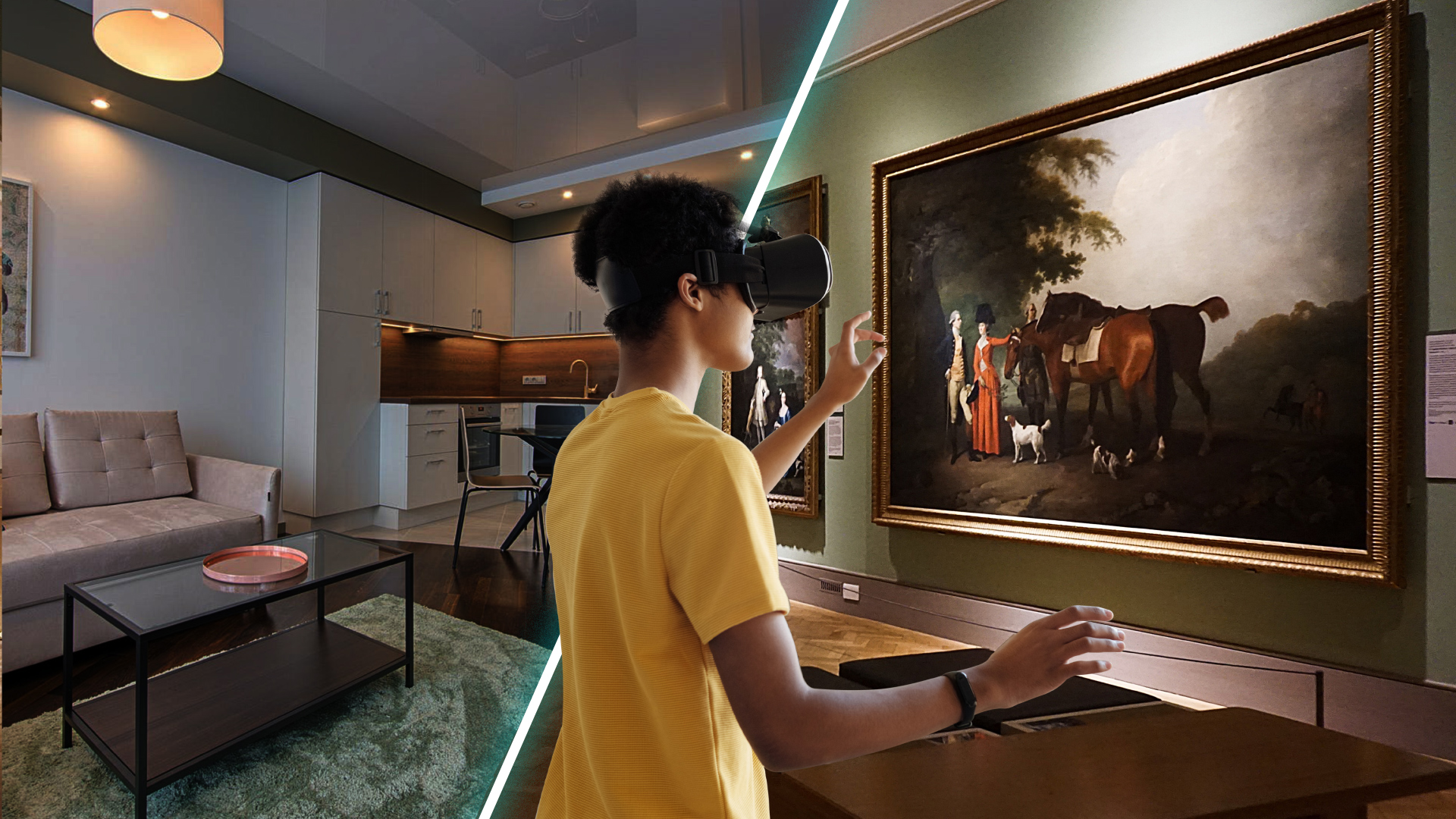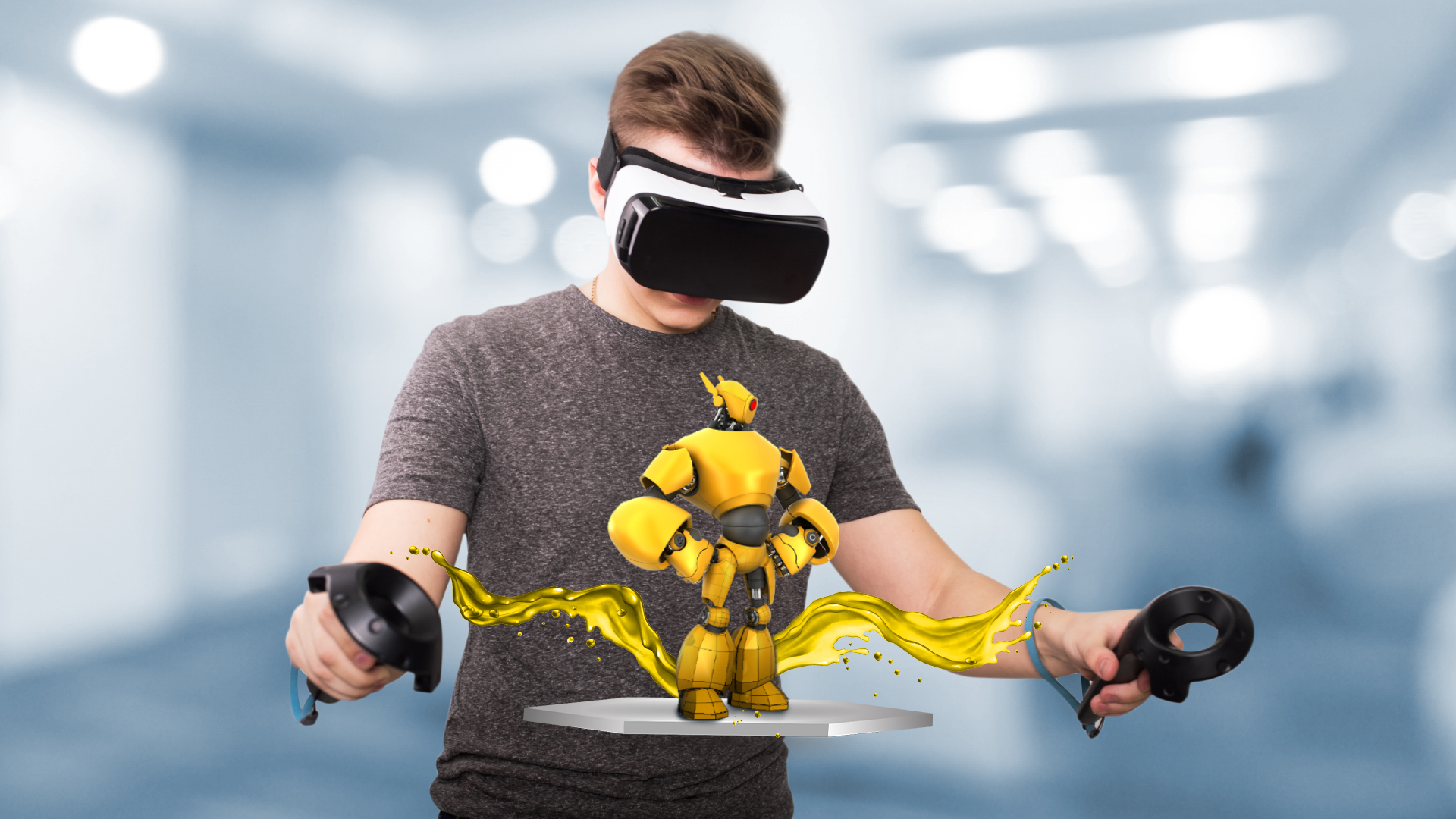Every once in a while, we love to escape the real world and dive into the realm of fantasy, where anything and everything comes to life. In the modern world, it is either the technology around us or the art forms we love like painting, craft, dance and more, that help us in our escape from reality.
What if we told you that you can offer your customers the best of both worlds? The incredibly immersive feeling of art along with the sophistication of modern cutting-edge technology! Sounds like a dream, doesn’t it? Well, it is certainly possible to bridge the gap between art and technology thanks to the latest developments in Virtual Reality (VR).
Virtual Reality (VR) has grown to such heights that is has become difficult to fathom what cannot be done with it. Now, it has pushed the barrier even further and made its way into art!
Let us explore how various sectors of art are making use of Virtual Reality to take their passion forward, raise funds for charity and generate revenue for commercial purposes.
Making Art Galleries Accessible

Not so long ago, art galleries and technology were worlds apart. To the extent where one demonized the other. However, with the advent of Virtual Reality and its endless implications, both sides have come together as a beautiful conglomeration. Starting with art galleries.
If you are running an art gallery, or you are working for one, then you comprehend the value that people walking into your gallery hold. The people looking at and embracing the art of various artists could potentially raise mountains of money to keep the good work going. Moreover, the artists would be elated and motivated in their work when there are more people to appreciate them.
Virtual Reality allows art galleries anywhere in the world to extend their reach dramatically by making them accessible to all! Because, when it comes to art, it is not just about putting it out there for people to see, but is also about evoking the deepest emotions that the artist wants to convey and stimulating the creative senses of the human mind. This can be made possible only with VR.
Allowing Artists to Create New Worlds
We all know how artists and creative people can turn a blank canvas into an enchanting masterpiece! But have you ever wondered what an artist could do if the entire world were a canvas? Virtual Reality can bring this to reality as well.
By just wearing a pair of goggles and with few more accessories, artists will be immersed in this new virtual world, where they can create and render new worlds from their imagination without any technical expertise. Moreover, the artists can do this not only in two dimensions but in all three dimensions.
But what implications does this have for businesses around the world? Well, the answer is a fun one.
Such use of VR can find applications in the gaming industry, product design industry, design thinking methodologies and more.



VR and Artists for the Gaming Industry
Artists can use VR to create entire scenarios and environments for users and players. Since VR requires only creativity, artists can unleash their full creative potential without any setbacks that arise from limited technical expertise.
For instance, the renowned artist, Daniel Steegman Mangrane, made use of Virtual Reality to take his audience to a Brazilian rain forest all whilst being confined in a four-walled hall! The viewers we astounded with the detail of texture, sound and clarity!
VR and Artists for Product Designing



Product designing is majorly taking up by engineers. However, the majority of people would agree that engineers are better suited to take up technical tasks rather than creative tasks, unlike artists, who thrive on creativity.
Unfortunately, due to the required technical expertise, engineers were at the forefront of designing the aesthetics of a modern-day product. But with VR, the design language and the 3D designing industry can take gigantic leaps forward because of artists. Artists can now be directly involved from start to finish for a product’s design.
Moving Through Time with VR
Art is not just limited to present-day artists making portraits and paintings. It further extends to the marvellous inventions, crafts and historic paintings like those of Van Gogh.



Art enthusiasts regularly make tours of museums for the fabulous artefacts on display and the fixating beauty of paintings. Unfortunately, not all museums are accessible by all. For example, the world-famous Louvre Museum in Paris that is home to some of the most exquisite paintings like the Mona Lisa by Leonardo da Vinci.
Furthermore, the coronavirus pandemic rendered museums and other archives more inaccessible to the commoners than ever before. But, thanks to the technology of Virtual Reality, museums can go to the tourists instead of the other way around.
The modern VR technology provides an immersive experience that is unheard of! Tourists, art enthusiasts, researchers and others can take tours of the entire museum from anywhere in the world and actually feel like they are in the place.
This can add value to the community, boose revenue for this industry and also contribute to the local economy.
Museums like the Jewish Museum in New York are already stepping into the realm VR.
VR for Art Schools
Virtual Reality is also storming its way into education. Leading art and design schools like the Royal College of Art in London are seeking to revolutionize the mode of education with VR because it provides a learning experience to students unlike any other!
These top-notch education centres for art also look at Virtual Reality as a golden opportunity to minimise their carbon footprint while cutting costs. Thousands of pounds of raw materials like paper, paint and other stationery would be saved in addition to even greater amounts of money. This will not only benefit the nature, but the lowered operational costs imply that these institutions can be opened for more people.
Virtual Reality for the Art of Photography
Virtual Reality is a great means for photographers, camera companies and other media agencies to take their business to new heights by offering something completely out of the box to their customers.
Let us put this into perspective. When photography was first introduced, the notion of capturing a moment in time on a sheet of paper and being able to view it anytime was like fantasy island coming to reality. VR takes it further!
With Virtual Reality, it is possible for people to capture not just a singular frame of what they see, but the entire world around them. To make things even cooler, they can relive the whole experience by simply putting on a pair of VR goggles!
It is not just limited to photography; VR can also play a huge role in videography and cinematography. Many argue that the next phase of modern cinema is going to be immersive with the help of VR, where the audiences do not just watch the movie, but can be a part of it and experience it!
Companies like Nikon have already taken the first steps in this direction.
Conclusion
Virtual Reality technology is still in its rudimentary phase for art. This is the right time for businesses and brands that thrive on creativity to make use of this to see fruitful results in the long run.
So, is VR the future of art? It certainly seems to be the case. Virtual Reality has the capability to unlock the potential impact of art on the society. The faster the businesses adopt this technology, the more advancements we can witness in art, technology and standard of living.










